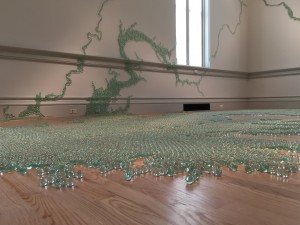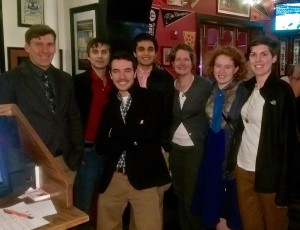
Kubrick’s transcendent match cut, millions of years in 1/24th of a second, from the film 2001: A Space Odyssey.
1968. White Plains, New York. My mother takes me to a matinee of 2001: A Space Odyssey. The theater seats thousands and the movie plays continuously all day without commercials or trailers. A uniformed usher with a flashlight seats us. I stare wide-eyed, mesmerized by the images and sounds. I ask my mother what the ending means. She says, “Maybe a baby will one day reach Jupiter”. The following year, I watch spellbound as the first astronauts walk on the moon.
1975. Middlebury, Vermont. My high school busses us one hour to a mall cinema in Burlington to see a re-release of 2001. I’ve read Clarke’s poetic novel many times. The new poster features the Star Child not the space station. Some of the kids get bored. One next to me says, “I hate this music”. I tell him it’s the Blue Danube waltz by Johann Strauss. After we return, I sit in the library pretending to read, lost in reverie. The experience of the movie reverberates in my mind, and waking life seems mundane by comparison.
1981. I’m an undergraduate at the University of Vermont. It’s a weekend evening, and 2001 is being screened in the chemistry lecture hall, projected on the wall above the chalkboards. Although it’s one of only about twenty feature films ever photographed in 70 mm, tonight we watch a 16-mm print. I sit near a couple of fellow film students, one of whom gasps when the man-ape tosses a bone club up in the air, and it falls down a nuclear warhead in orbit millions of years later — Kubrick’s transcendent match cut.
1986. I’m a Caltech graduate student. 2001 is being simulcast on TV and radio. The TV is in the lounge and someone has dragged large stereo speakers into the hallway. I listen to the film while working in my room. It’s an extraordinary soundtrack, mostly wordless. A long sequence of electronic sounds followed by many minutes of heavy breathing underscore the confrontation between Hal and Bowman. I visit the lounge as the space station and Earth waltz to the strains of the Blue Danube. In quiet amazement, someone whispers, “Whenever you hear this music, you think of this scene.”
1993. I’m a professor at The College of Wooster. I show my First-Year Seminar 2001 on laser videodisc. It’s better than videotape, except I need to flip the discs every half hour. I enhance the sound with my home stereo. Someone claims to see the thread suspending the floating pen onboard the space shuttle. I smile. There is no thread: Kubrick glued the pen to a glass plate in front of the camera (in the days before CGI). We’ve already read the novel, so I don’t expect much frustration, but I do expect some boredom. A couple students later confide that it was a revelatory and transforming experience. It is indeed a sacred film for a secular age.
Christmas, 2001. I fly to L.A. The famous Egyptian Theater on Hollywood boulevard is showing 2001 in a new 70 mm print with a digital soundtrack. I spend an hour walking around the downtown construction site of Gehry’s fantastic, twenty-first century Disney Concert Hall and then take the subway to Hollywood. The poster has the tag line, “The future is now.” The detail in the 70 mm images is amazing. With film, so much more is possible than is normally imagined, let alone realized. Great film, like no other medium, can transfix and transform us. It can sweep us away, it can make us dream, eyes wide open.






































Thanks, Mark! I enjoy reading your posts as well.